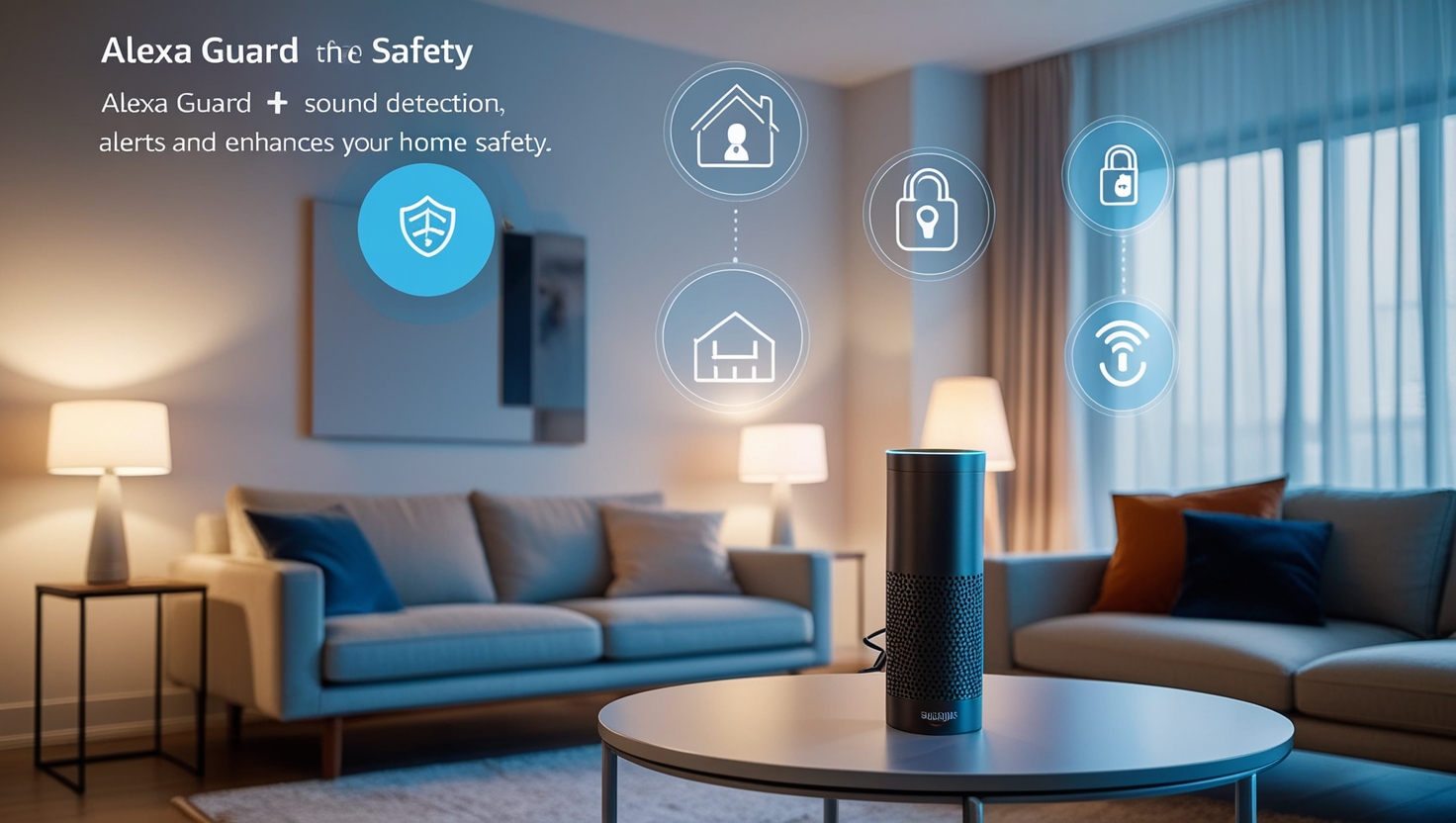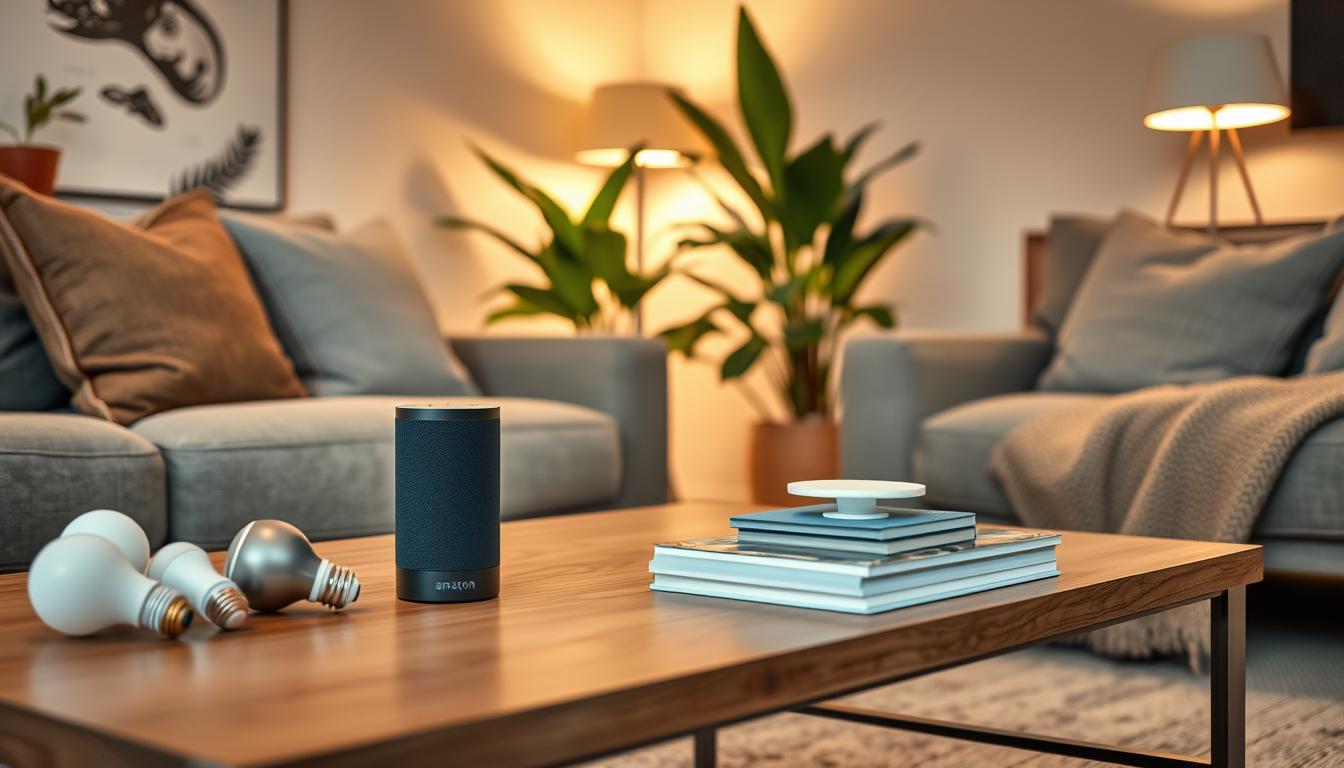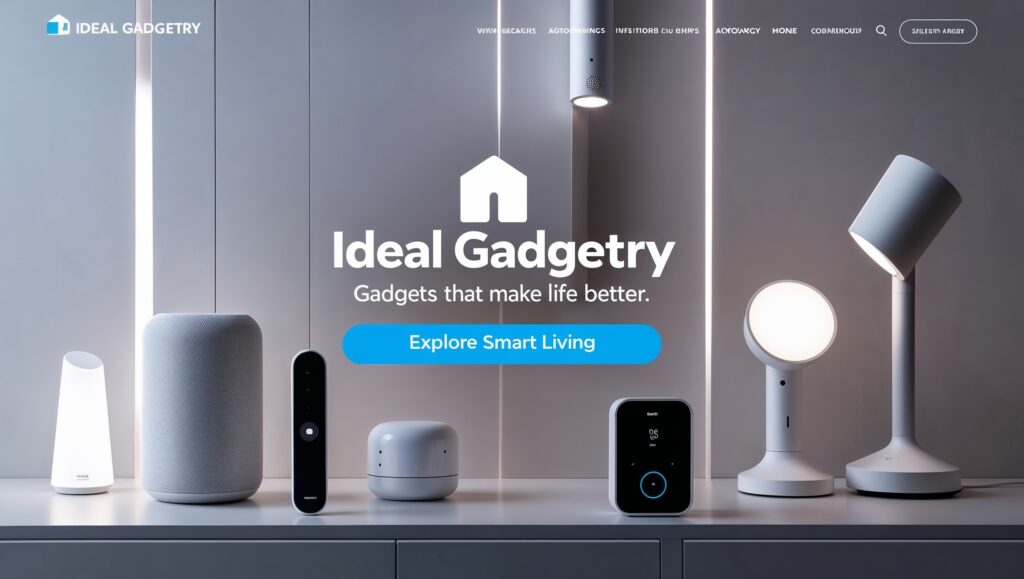Ever wondered how your smart home devices get your voice commands right every time? Meet Google Assistant, the core of Google’s smart home system. It makes your home smarter with AI technology and conversational AI.
The Google Home is coming on November 4 for just $129. It’s designed to change how we talk to voice-activated devices. Even with fewer microphones than Amazon Echo, it still hears you well, even over background noise. It also works well with popular smart devices like Philips Hue lights and Nest thermostats.
With Google Assistant, you can book tables, control lights, and adjust your thermostat just by talking. Google is opening its platform to developers, making its assistant even better. Its unique conversational style, thanks to Pixar writers, adds a fun touch to your interactions.
Key Takeaways
- Google Assistant is central to Google’s smart home ecosystem, supporting voice-activated control over various devices.
- Priced at $129, Google Home is set for release on November 4, boasting superior voice recognition capabilities.
- Despite having fewer microphones, Google Home excels in noisy environments with advanced voice recognition technology.
- Integration with devices like Philips Hue lights and Nest thermostats enhances smart home automation.
- Seamless booking of reservations via OpenTable and integration with music apps like Spotify and Pandora highlight its advanced features.
- The Assistant’s platform invites third-party developers to innovate further, expanding its functionality.
Introduction to Google Assistant
Google Assistant has changed how we use our smart homes. It’s a voice-activated tool that makes life easier and more convenient. Now, we can control our homes with just our voice.
What is Google Assistant?
Google Assistant lets you talk to your tech like you’re talking to a friend. It uses conversational AI to understand and do things for you. You can set reminders, ask questions, or control your smart home with ease.
History and Evolution
Google Assistant started with Google Now and voice search. Over time, it has grown into a more advanced AI. Now, it can handle complex tasks and understand you better.
The tech behind Google Assistant has a long history. It began with early voice recognition in the 1990s. Now, it’s a key part of our smart homes, making life simpler.
The move from Google Now to today’s Google Assistant shows how tech keeps getting better. It’s making our homes smarter and our lives easier. This change is a big step forward in smart home technology.
Exploring Google Assistant’s features shows how important it is. It’s changing how we interact with our homes in big ways.
Features of Google Assistant
Google Assistant makes our lives better with smart voice commands and personal touches. It uses advanced voice recognition for hands-free control and custom help for users.
Voice Commands and Control
Voice recognition is key for Google Assistant. It can understand and do many voice commands. Users can control smart home devices, set timers, and stream content from Netflix, Hulu, and Disney+.
Google Home devices support many voice-activated features. These include:
- Access to millions of songs via YouTube Music, Spotify, and Pandora.
- Hands-free calls with Google Duo.
- Broadcasting messages to all compatible devices at home.
These features show how Google Assistant improves home connectivity and user interaction.
Personalized Assistance
Google Assistant does more than just follow commands. It learns what you like and when you do it. This AI customization makes it feel like a personal helper, unlike Amazon’s Alexa.
Google Assistant also knows about different cultures and languages. It adapts to your region and language, making it feel more personal and unique.
| Feature | Description |
|---|---|
| Voice Commands | Control smart home devices, stream media, and set reminders using voice recognition. |
| Hands-Free Communication | Make calls and broadcast messages with Google Duo. |
| Personalized Assistance | Customized responses and actions based on user preferences and routines. |
| Entertainment | Integrates with Netflix, Hulu, Disney+, Spotify, YouTube Music, and Pandora. |
| Privacy Controls | Manage and delete voice search history and control data sharing with Google. |
Google Home Integration
Setting up Google Home is easy, making it great for everyone. It works well with many smart speakers and devices. This makes your home smarter and more connected.
Setting Up Google Home
Setting up Google Home is simple, but sometimes you might face issues. Like the “No Devices Found” error. Here’s how to fix it:
For iPhone users:
- Make sure Bluetooth is on.
- Update the Google Home app.
- Close and reopen the app.
- Connect to Google Home via Wi-Fi.
For Android users:
- Turn on Location Services.
- Update the Google Home app.
- Close and reopen the app.
- Connect to Google Home via Wi-Fi.
If Google Home can’t tell family members apart, retrain it. Also, rebooting your network can fix connectivity problems.
Compatibility with Other Devices
Google Home works well with many devices, making your home smart. It’s compatible with 22 out of 40 smart systems. This includes Nest x Yale locks and Philips Hue lights.
But, it doesn’t work with some systems like Scout and Sonos. For entertainment, Google Home supports 10 out of 11 streaming platforms. This makes it great for streaming movies and music.
Using Google Home Hub or Mini makes controlling your home easy. Just use voice commands. This makes Google Home a key part of a smart home.
Following these steps will make your home smarter. Google Home turns your home into a connected, intelligent space.
Smart Home Automation with Google Assistant
Smart home automation with Google Assistant is changing how we live. It lets us automate tasks and create smart routines easily. This makes our lives more convenient. Technologies like Automatic Speech Recognition and Natural Language Processing help make this possible.
In the last year, many have set up Google Home in their homes. Some found Hubitat’s UI hard to use and gave up. But, Smartthings had a much better interface. Still, getting Smartthings and Google Home to work together can be tricky.
Voice control is key in smart homes, making it easy to control devices with voice commands. Big tech companies like Google and Amazon have made big strides here. This has made our smart routines more convenient and efficient.
Let’s compare the features and user experiences of different smart home automation hubs:
| Feature | Hubitat | Samsung Smartthings Hub v3 | Google Home |
|---|---|---|---|
| User Interface | Disappointing | Significantly Better | Intuitive |
| Integration Ease | Positive | Challenge with Google Home | Seamless |
| Interoperability | Good | Limited Bidirectional Communication | High |
Some users have had trouble getting Smartthings and Google Home to work together. But, they still love the convenience of voice-controlled smart homes. The community is very engaged with these new technologies.
In summary, using Google Assistant for home automation offers a smooth experience. It lets us manage our homes easily with the latest tech. This makes our daily lives better with smart routines that fit our needs.
Voice-Controlled Devices
Voice-controlled devices have changed how we manage our homes, making life easier and more efficient. With voice AI, we can control our homes with just our voice. Let’s explore the top voice-controlled devices and how they work with Google Assistant.
Popular Voice-Controlled Devices
Devices like Google Home Hub, Amazon’s Echo Plus, and Philips Hue smart lights are key in smart homes. They offer great voice command functionality. This lets users control lights, security, and entertainment easily.
Google Home is especially popular for its wide range of plugins. It’s great for precise voice commands.
| Device | Key Features | Compatibility | Pros | Cons |
|---|---|---|---|---|
| Google Home Hub | Voice control, touch display | Google Assistant | Extensive plugins, accurate voice recognition | Occasional connectivity issues |
| Amazon Echo Plus | Smart home hub, premium sound | Amazon Alexa | Excellent audio quality, broad compatibility | Privacy concerns with Amazon Sidewalk |
| Philips Hue Lights | Color changing, scheduling | Google Assistant, Amazon Alexa | Energy efficient, easy setup | Requires Hue Bridge for full functionality |
How They Work with Google Assistant
Google Assistant makes integrating devices easy, changing how we use our smart homes. It lets us control devices like locks, speakers, cameras, and lights with voice commands. For example, saying “Hey Google, turn on the lights” lights up your home quickly.
To get the most from smart controllers, add devices to the Google Home app. This ensures they work with Google Assistant. With over 5,000 devices connected, managing our homes is effortless.
Devices like Nest Learning Thermostat and iRobot Roomba 690 also make our homes smarter. They simplify tasks like adjusting the temperature or cleaning. These devices show how Google’s voice-controlled system makes life easier.
Enhancing Home Connectivity
Google Assistant makes our homes more connected, efficient, and easy to control. It links many smart devices together. This creates a powerful connected home system. Let’s explore how it works.
Connecting Your Home Devices
Connecting smart devices is key to a connected home. Google Assistant makes it easy to link devices like lights, thermostats, and security systems. For example,
- Smart Lighting: Smart lights can turn off automatically, saving energy and money.
- Thermostats: Thermostats like the Nest Learning Thermostat adjust to our habits. They make our homes more comfortable and save energy.
- Smart Home Security: Smart cameras, doorbells, and locks keep our homes safe. We can watch our homes from anywhere.
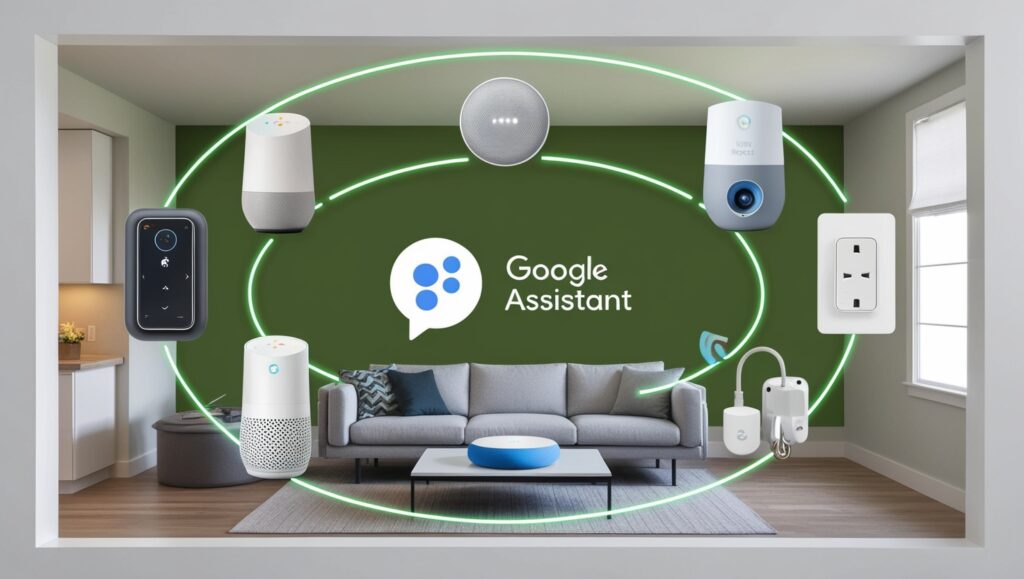
Managing Connected Devices
Managing all devices from one place is crucial. Google Assistant offers centralized control. This makes our tech more efficient and easy to use. Here’s how voice assistants help:
- Voice Assistants: Google Assistant and Amazon Alexa let us control devices with our voices. This makes our homes more automated.
- Entertainment systems: Smart TVs, soundbars, and streaming devices work better with Google Assistant. They offer a great entertainment experience.
- Energy Efficiency: Smart devices like thermostats and lights help save energy. This can lower our utility bills.
Google Assistant helps us manage our smart devices better. This central control makes our homes more efficient, convenient, and tech-friendly.
Google Assistant Features
Google Assistant makes our lives easier with its wide range of features. It uses AI capabilities to make our interactions smooth and natural. Whether it’s automating tasks or giving us personalized updates, Google Assistant has us covered.
Daily Use Cases
Google Assistant is a big part of our daily lives. It starts with us waking up and ends when we go to bed. Here’s how it fits into our routine:
- Task Automation: Google Assistant can automate tasks like playing the morning news or adjusting the thermostat based on our location.
- Personalized Updates: Get updates like traffic reports or weather forecasts that are just for you.
- Interactive Features: Ask follow-up questions without repeating yourself, thanks to Google Assistant’s smart understanding.
Advanced Features and Tips
There’s more to Google Assistant than meets the eye. Here are some tips to unlock its advanced features:
- Contextual Conversations: Enjoy smooth conversations without repeating yourself, thanks to Google Assistant’s AI.
- Third-party App Integration: Boost your productivity by linking Google Assistant with other apps.
- Multitasking Proficiency: Google Assistant can handle multiple requests at once, making your day more efficient.
Google Assistant stands out because of its deep connection with Google services. It’s a top choice for many users. It keeps getting better with new updates and features.
| Feature | Benefit |
|---|---|
| Google Nest Hub | Two sizes: the compact Nest Hub (2nd gen) and the larger Nest Hub Max |
| Google Nest Wi-Fi | Extends Wi-Fi coverage and functions as smart speakers |
| Google Nest Cameras | Various models including indoor, outdoor, wired, and battery-powered options |
| Google Nest Doorbell | Real-time notifications and a live video feed for front door monitoring |
| Google Nest Thermostat | Adjusts temperatures based on phone location to save energy and money |
| Google Nest Smoke Alarm | Differentiates between smoke and steam, reducing false alarms |
Google Assistant is key to a smart home. It keeps improving to meet our needs with powerful features.
Google Assistant: The Brain Behind Your Smart Home
Google Assistant has changed how we interact with our homes. It brings a new level of smart technology into our lives. This AI home assistant makes things possible that were once thought impossible.
In the 1970s, voice recognition took hours to understand a sentence. Now, Google Home answers in milliseconds. This change has transformed how we use voice commands and smart technology.
Google Home works with over 50,000 smart devices. While Amazon Alexa supports 140,000, Google Home’s design is seamless. You can control many things with just a voice command. Google Home even changes its voice to make interactions more personal.
Amazon’s Echo lineup has more models, but Google Home is still very compatible. This makes setting up your smart home easy and efficient. Google Home not only handles daily tasks but also enhances your smart home experience by working with other devices.
For those new to smart homes, the Google Nest Mini (2nd Gen) is a great choice. It’s a good starting point, even if it doesn’t have the best sound. Apple Home, on the other hand, supports fewer devices and has less control options.
Google Assistant is at the heart of your smart home. It makes daily routines simpler and more enjoyable. It shows the power of modern smart technology.
Smart Home Technology Trends
The smart home market has seen huge changes with new tech. It’s now all about constant innovation. Smart home tech is making our lives easier, saving energy, and keeping us safe.
Current Trends in Smart Home Tech
Smart speakers are everywhere, with over 200 million sold in 2022. Devices like Google Home and Amazon Echo are changing how we live. Smart thermostats can even cut energy bills by up to 20%.
Smart lighting is also on the rise, expected to hit $22.8 billion by 2027. People want lights that save energy and look good. Plus, 41% of smart home owners feel safer, showing the need for smart security.
The Future of Smart Homes
The future of smart homes looks bright, with the market set to hit $783.94 billion by 2030. This growth is thanks to new tech and our desire for smarter homes. AI will make our homes even smarter, more personal, and efficient.
Soon, more home appliances will work together, creating a full smart home system. AI will also make our lives easier, making tasks more efficient. For more on this, check out Zoya Naeem’s in-depth look at smart home.
Smart home tech is not just about convenience. It’s also about making our homes more sustainable. Smart appliances, for example, could save a lot of energy by 2027.
As the smart home market grows, AI and new tech will change our homes. This change will make our homes more comfortable, secure, and sustainable. It’s a future we’re all excited about.
| Smart Home Technology | Current Value | Future Projections |
|---|---|---|
| Global Smart Home Market | $90 billion | $783.94 billion by 2030 |
| Smart Speakers | Over 200 million units shipped in 2022 | Continuous growth with new integrations |
| Smart Lighting Market | $9 billion | $22.8 billion by 2027 |
| Smart Thermostats | Popular for energy savings | Increased adoption for efficiency |
| Smart Appliance Market | $60 billion | $120.9 billion by 2027 |
| Smart Security Systems | 41% homeowners feel more secure | Broader adoption for enhanced safety |
AI Assistant Capabilities
AI technology has made big leaps, improving virtual assistants like Google Assistant. These smart helpers use advanced AI voice recognition and chat AI. They’re changing how we talk to our smart homes. Google’s use of large language models has made it easier to understand and act on our voice commands.
Understanding AI in Google Assistant
At the heart of Google Assistant are AI voice recognition and natural language processing. These let us control our devices with just our voice. In 2022, Google added “Look and Talk,” making conversations more natural.
Virtual assistants like Google Assistant, Amazon Alexa, and Apple Siri rely on machine learning. This lets them get better at understanding and responding to us. The growth of large language models has been key in this improvement.
The Role of AI in Home Automation
AI is crucial for smart homes that can predict what we need. It looks at our habits to suggest things and do tasks for us. This makes our homes more comfortable and our lives easier.
Generative AI is making virtual assistants even smarter. Companies like Google, Amazon, and Apple are working on this. It’s going to make our homes even more interactive and personalized.
| Virtual Assistant | Technology | Latest Innovation |
|---|---|---|
| Google Assistant | NLP, LLMs, AI voice recognition | “Look and Talk” for two-way conversations (2022) |
| Amazon Alexa | Machine learning, NLP | Exploring generative AI integration |
| Apple Siri | Machine learning, AI voice recognition | Development of Ajax LLM for Apple GPT |
Home Automation Solutions
In today’s fast-paced digital world, home automation is key to smart homes. It uses AI home solutions for unmatched tech convenience. Google Assistant makes controlling smart devices easy.
Home automation lets you manage lights, thermostats, and more from one spot. This boosts convenience, security, and energy use. For example, with hubs like Amazon Echo, you can set schedules for devices. This saves energy and keeps your home comfy.
- Centralized Control: Simplifies the management of multiple smart devices from a unified interface.
- Enhanced Security: Real-time alerts and remote monitoring provide peace of mind for homeowners.
- Energy Efficiency: Intelligent thermostats and smart lighting systems can be programmed to reduce energy consumption based on user habits.
Wi-Fi, Bluetooth, and Zigbee are key for device communication in smart homes. IoT makes these devices work together smoothly. This creates an efficient home automation system.
Choosing a home automation hub is important. Look for compatibility, voice control, and security. Google Home with Google Assistant is a top choice for modern homes.
Voice assistants like Siri, Alexa, and Google Assistant are getting popular. They make smart home control easy with just your voice. As AI grows, so will the smart home experience.
Advanced home automation hubs make our homes connected and efficient. They improve energy use, security, and make controlling devices easy. These solutions are the future of home automation.
Safety and Privacy Concerns
As smart home tech grows, keeping safe and private is key. We need strong security to stop unauthorized access. Using good passwords and updating software regularly is crucial for our devices.
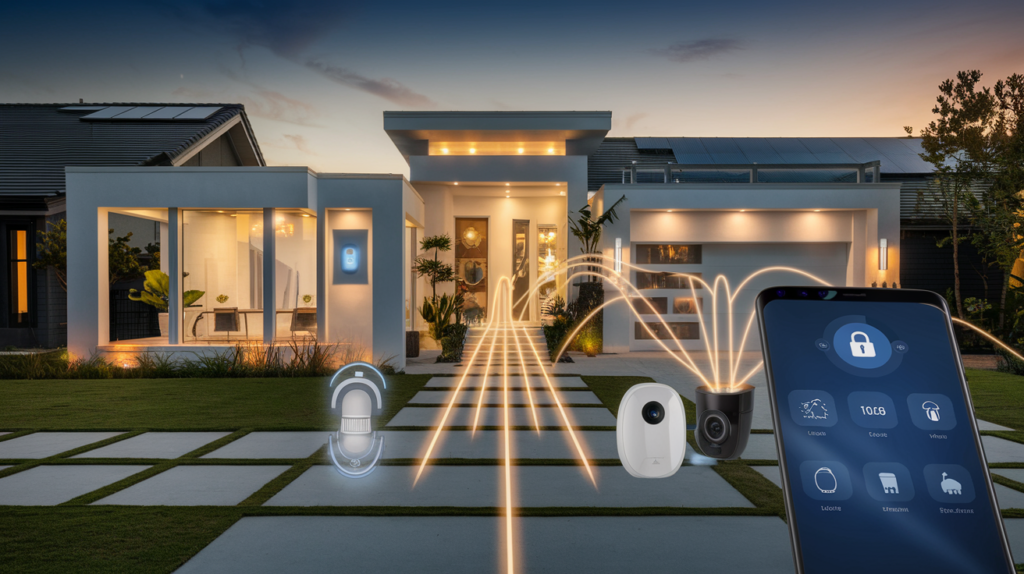
Protecting Your Smart Home
With devices like Google Home in our lives, we must know how to keep our homes safe. Studies at the ACM Internet Measurement Conference show the risks. Out of 93 IoT devices tested, many scanned local networks, risking privacy.
This study found Android apps could get around permission rules. They could access location or unique IDs by talking to other devices on the network. To fight these risks, standards like the Matter protocol and laws like the EU Cyber Resilience Act are being proposed.
Ensuring Data Privacy
Keeping data safe is vital for privacy. Google is working with researchers to improve security. They aim to encrypt personal info and control access tightly.
Google Home encrypts data between devices and the cloud, ensuring security. But, with kids using these devices, data protection is a big concern. Companies like Google see these devices as useful, but they must protect the data they collect.
Using tools like Google Family Link can help manage child accounts. It lets parents control screen time and app use. When setting up Google Home, use a Google account, create a strong password, and give consent carefully.
| Critical Security Measure | Importance |
|---|---|
| Robust Passwords | Prevents unauthorized access |
| Regular Software Updates | Fixes vulnerabilities |
| Data Encryption | Protects personal information |
| Parental Controls | Manages child safety and data access |
By focusing on security and data protection, we can enjoy smart home tech safely. This ensures privacy and security for everyone.
Conclusion
The evolution of smart homes has been greatly influenced by AI, especially Google Assistant. This journey shows how smart homes have grown from simple automation to complex systems. Google Assistant has made living spaces smarter through automation, maintenance, and integration.
The smart home market is still growing, but Google is leading the way. It owns Nest and Google Assistant, giving it a strong position. Many smart assistants, like Amazon’s Echo, are trying to connect better. Yet, no single solution has fully integrated everything.
Most smartphones now have smart assistants, and there are thousands of skills for Google and Alexa. This shows how these technologies are everywhere. Future advancements in AI and smart tech will change homes even more.
Google Assistant is making homes smarter by learning and adapting. This is shaping homes to fit individual needs. As AI and Smart Homes show, homes are becoming more convenient and efficient.
But, there are challenges like privacy and making different systems work together. Despite these, AI brings huge benefits to smart homes. With Google’s AI, homes will keep getting smarter, making our lives more intelligent and personal.


